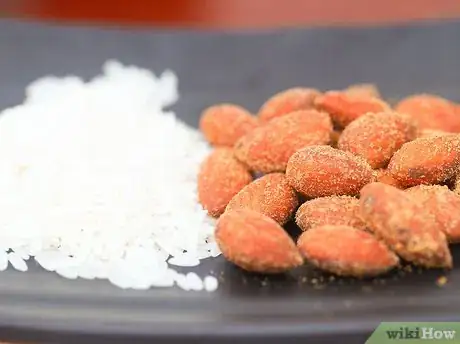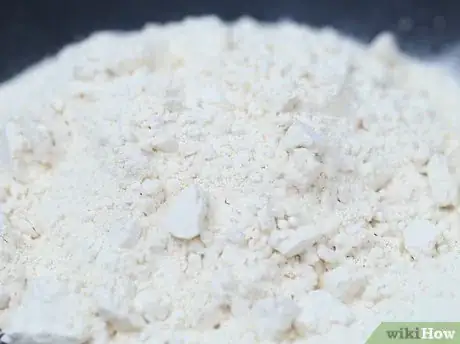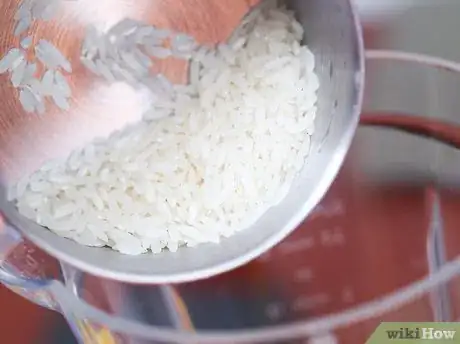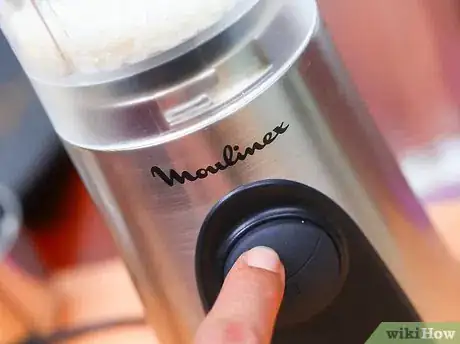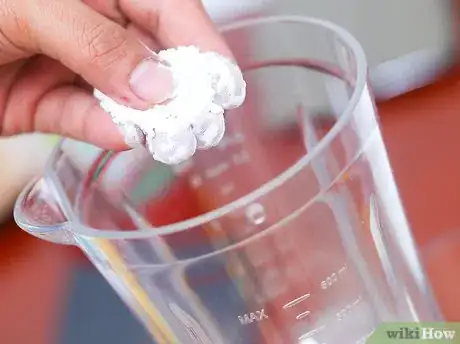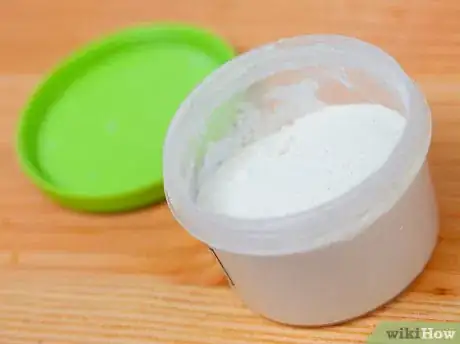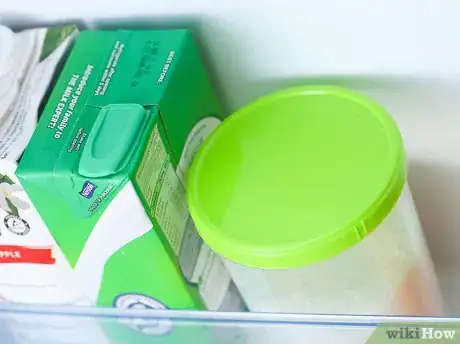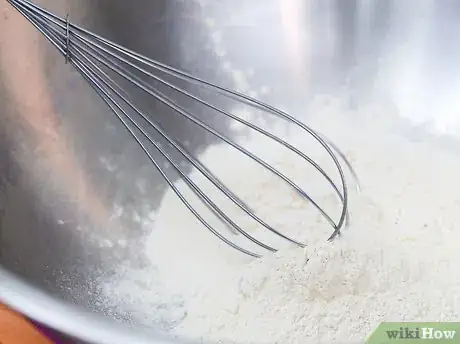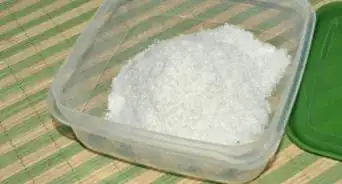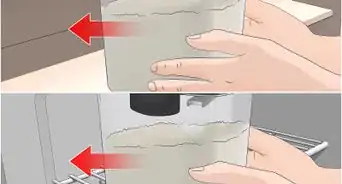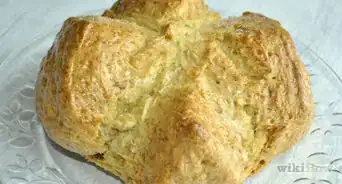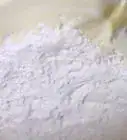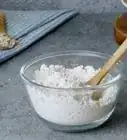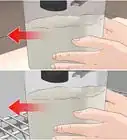This article was co-authored by wikiHow Staff. Our trained team of editors and researchers validate articles for accuracy and comprehensiveness. wikiHow's Content Management Team carefully monitors the work from our editorial staff to ensure that each article is backed by trusted research and meets our high quality standards.
There are 9 references cited in this article, which can be found at the bottom of the page.
The wikiHow Culinary Team also followed the article's instructions and verified that they work.
This article has been viewed 609,367 times.
Learn more...
Many people may not understand the making flour is a simple process that has been done for thousands of years in a number of different civilizations. The truth of the matter is that you can make it yourself in seconds. Why use that processed flour that's been losing vitamins for weeks on the shelves when you can get fresh flour now? All you need is some sort of grain that can be used as a flour, and a grinding apparatus (such as a coffee grinder or a coffee mill.
Ingredients
- Any type of grain, nut, or bean that can be ground (wheat, barley, oats, rye, quinoa, corn, rice, peas, garbanzo, etc.)
Steps
Stocking Your Kitchen
-
1Obtain your grains, seeds, nuts, beans...something to grind to a pulp. Practically any grain, nut, or seed can be turned into flour. Try exotic items such as quinoa, popcorn, acorns, and peas to the more traditional options like rice, wheat, oats, and barley. Fresh, whole wheat berries, rye berries, whole oats and the like can often be found at health food stores, sold in bulk. They'll be white, russet, purple or amber-colored. And it's cheaper by volume than the pre-made stuff, too!
- Know what kind of flour you want to make. Want whole wheat flour? Get whole wheat berries (they don't look like berries -- that's just what they're called). Want rye flour? Get rye berries. Flour ain't no rocket science![1]
-
2If you're going for wheat flour, know what's best for your cooking needs. Each kind lends itself to a different use. Spelt, Emmer and Einkorn grains are on the comeback and are healthy versions of wheat, too. For yeast breads, hard red (winter or spring) wheat is best.[2]
- For breads that don't need yeast (like muffins, pancakes, and waffles), soft white is the standard choice. Spelt, kamut, and triticale work, too.
Advertisement -
3Choose your grinding mechanism. If you'd like to spend hours cranking for your daily forearm workout, you're more than welcome. Or you could throw the seeds/berries/nuts/beans in your blender/food processor/coffee grinder and let it do the work for you.[3] If you do use some sort of electric device, the higher powered it is, the finer your flour will be.
- The manual mill really has one advantage: It doesn't produce any heat to damage the nutrients of the seeds. Other than that, it just takes a lot of time.
- The main drawback of electric mills is that they're just mills and they're a bit expensive (your cheapest one is going to run at about a couple hundred bucks).[4]
- The only downside of using a blender/food processor/coffee grinder is that it may not get you the finest quality of powder ("finest" here meaning like small, not of good quality). It all depends on the specific product you're using.
Grinding Your Goodies
-
1Place the good stuff into your mill/blender. Make the amount you plan to use right now -- fresh flour can go bad very quickly. Fill the mechanism only about halfway full so there's room for it to blend away.
- 1 cup of wheat berries should produce just over 1 1/2 cups of flour. For beans and nuts, etc., the same to 1.5x the original amount will be produced.
-
2Grind away. If you're using a mill, turn the crank until all of the grain has been processed through it. If you're using a blender, select the highest setting to blend the grain for about 30 seconds. Then turn it off, remove the lid, and stir with a rubber spatula. After stirring, place the lid back on and blend some more.[5]
- Your mechanism determines how fast the stuff will grind. If you're using one of those fancy schmancy high-powered blenders (like Blendtec or Vitamix[6] ), your flour will be done before you can say, "Is the flour done yet?" If you're grinding manually, well, hope you took the afternoon off work.
-
3Continue to crank your mill or blend your grains until the flour reaches the texture you want. You can check on this by sifting the mixture you have into a bowl and surveying it up close. Touch it to make sure it has the right consistency (wash your hands thoroughly first!) and if it doesn't, run it again.
- Your coffee grinder will never get the flour to a processed-flour-like consistency. What you may have to do is take the flour through a sifter to get out the chunkier bits and make do with what's left over.[7] It'll still be delicious!
Using and Storing Your Flour
-
1Once you're satisfied with your flour, store it in a resealable bag or container. You may have to use more than one if you've made a lot of flour, but keeping it fresh will definitely pay off in the long-term. And there you have it: ready-made flour for the dough of your dreams![8]
- Keep your flour in a cool, dark place. This will prevent insects and sunlight from doing irreparable damage. If you'd like, place a bay leaf in with the flour to prevent bugs from bugging your flour.[9]
-
2If making bulk amounts, keep it in the fridge or freezer. Whole wheat flour will go rancid especially fast, clocking in at only a few months: if put in a cabinet. If it changes color or smells bad (which it won't do when kept cold), don't hesitate to throw it away.[9]
- To freeze the flour, just put it in its resealable container and chuck 'er in. It'll keep for years. Just don't forget to use it occasionally!
-
3Experiment with your flour first. You may find that your homemade flour has a much different taste than you expected and acts quite differently when cooked (that's because it's super fresh). So don't use it straight away if you're looking for a gold medal at the fair. Experiment first.
- Fresh flour gives the yeast more to feed on, resulting in more fermentation activity. This can change the tastes of recipes you have been baking for years. It should definitely change it for the better![7]
Community Q&A
-
QuestionHow do I make bread flour from all purpose flour?
 Community AnswerTo make bread flour from all purpose flour, simply add 1 teaspoon of wheat gluten for each cup of flour. Combine the flour and wheat gluten well. If you don't plan on using it right away, store it in an airtight container.
Community AnswerTo make bread flour from all purpose flour, simply add 1 teaspoon of wheat gluten for each cup of flour. Combine the flour and wheat gluten well. If you don't plan on using it right away, store it in an airtight container. -
QuestionHow long does it take the flour to go bad?
 Community AnswerIn a cupboard, a month. In a freezer, a year. (Only applies to airtight containers.)
Community AnswerIn a cupboard, a month. In a freezer, a year. (Only applies to airtight containers.) -
QuestionCan I use the flour immediately to make cookies?
 QamarTop AnswererYes, you can use the flour to make cookies as soon as you've finished preparing it.
QamarTop AnswererYes, you can use the flour to make cookies as soon as you've finished preparing it.
Warnings
Things You'll Need
- Some type of grinding apparatus (flour mill/food processor/blender/coffee grinder)
- Rubber spatula (optional)
- Sifter (optional)
- Bowl
- Container(s) for freezing
References
- ↑ https://www.bonappetit.com/test-kitchen/ingredients/article/guide-to-flour
- ↑ http://www.madehow.com/Volume-3/Flour.html
- ↑ https://www.abreaducation.com/content/make-flour-at-home
- ↑ http://www.motherearthnews.com/real-food/choosing-a-grain-mill-zm0z04djzkin.aspx?PageId=2#axzz2dJWxH8Sy
- ↑ https://morningchores.com/how-to-make-flour/
- ↑ http://www.blenderbabes.com/baking-recipes/bread-muffin-recipes/wheat-flour-and-other-flours/
- ↑ 7.07.1http://www.abreaducation.com/make-flour-at-home.php
- ↑ https://www.thekitchn.com/a-complete-guide-to-storing-your-flour-204729
- ↑ 9.09.1http://whatscookingamerica.net/Bread/FlourTypes.htm
About This Article
To make flour, choose a grain, nut, or bean that you'd like to start with. You can make flour out of just about anything starchy, but a common choice is whole wheat berries, used to make whole wheat flour. You can usually find these in the bulk section of your local health food store. Then, simply add 1 cup of it to your blender and blend on high for about 30 seconds or until is resembles flour. This will make 1 1/2 cups of flour that you should store in an airtight container or freeze it if you don't plan to use it right away. To learn how to use a manual mill, keep reading.
